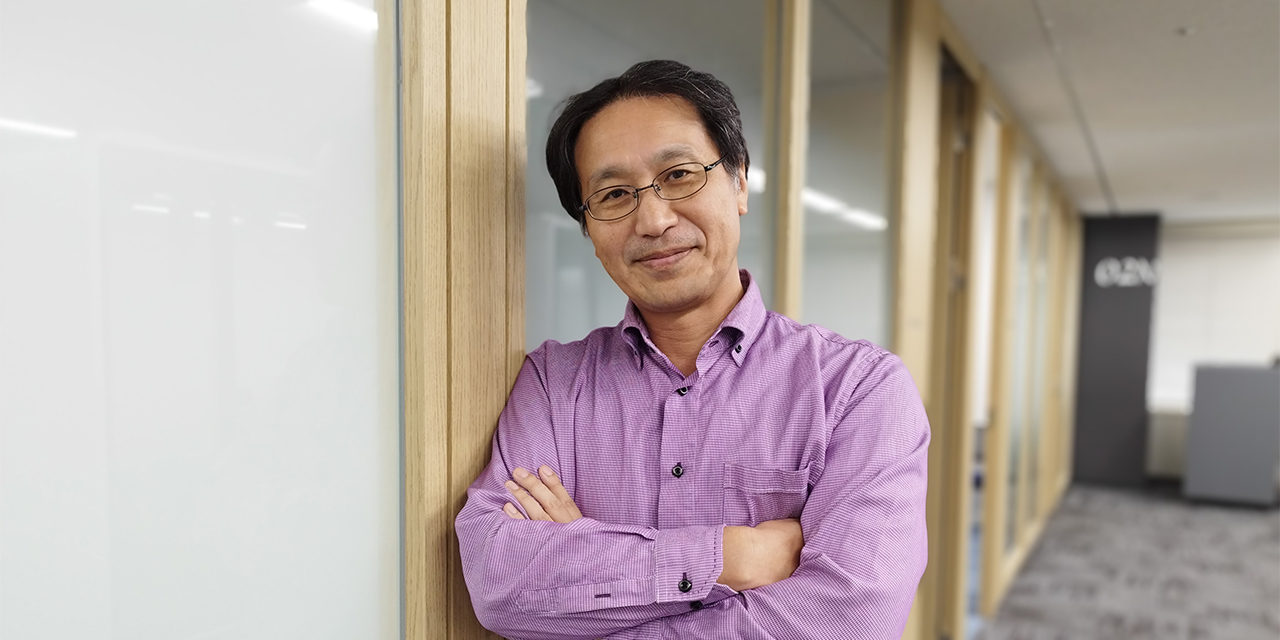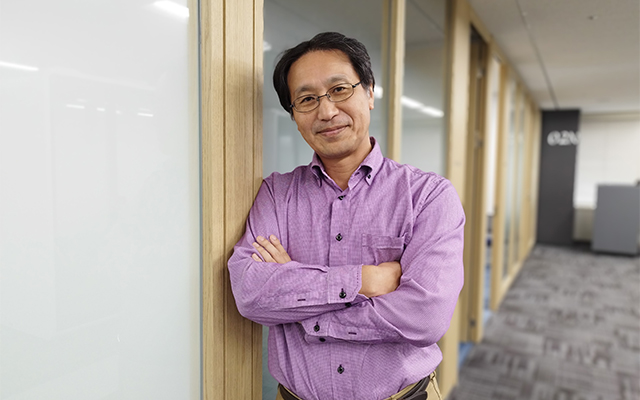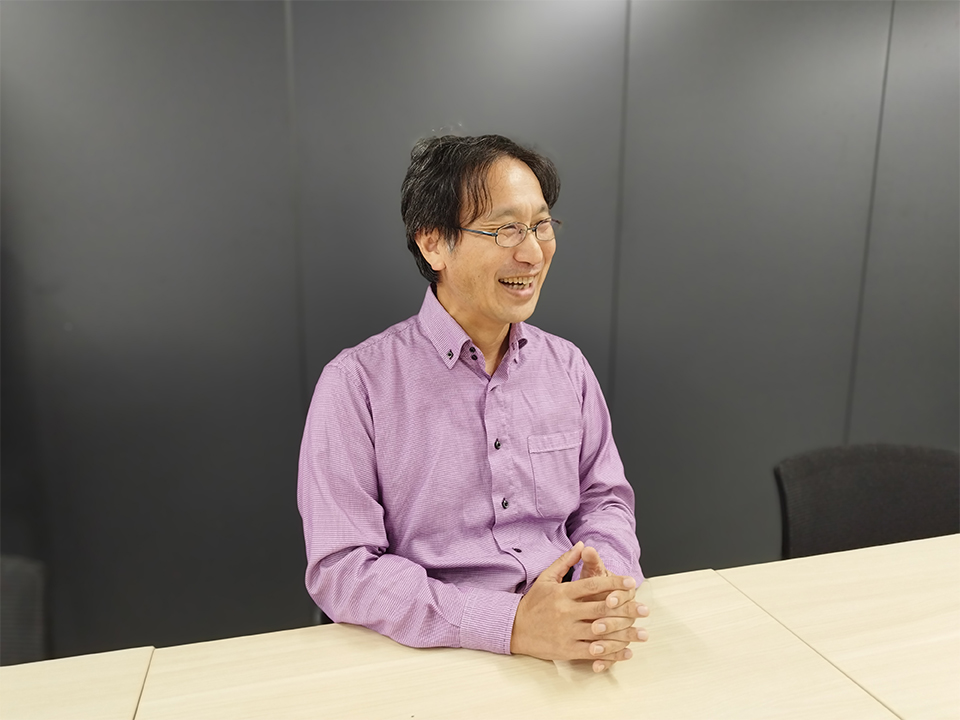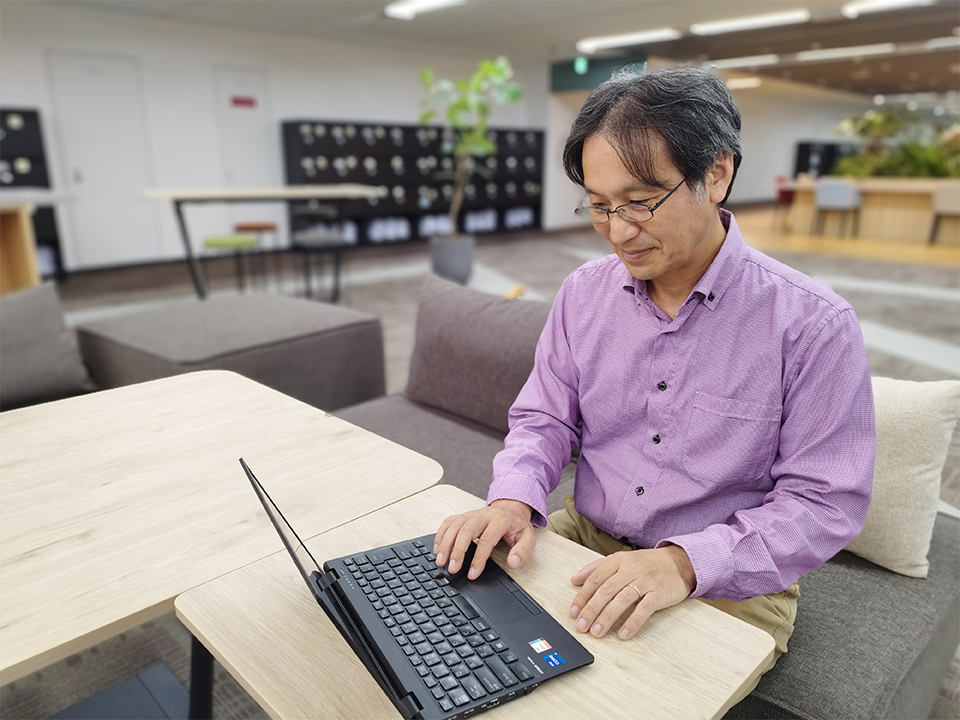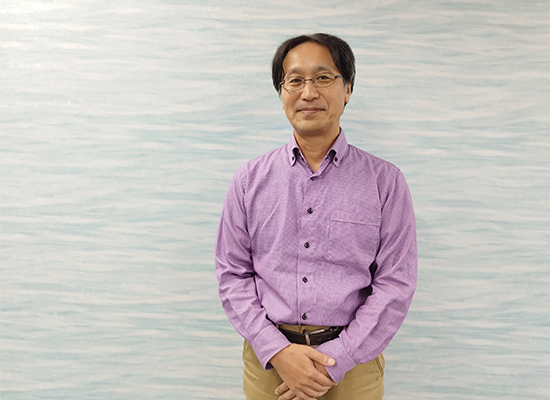Toward machine translation that eliminates language barriers around the world
When I was 15 years old, my father was transferred to work in England and our whole family moved to London with him. I went to an international school in London, where children from all over the world with different languages and cultures were conversing in English. To start with, I found it very difficult, as I had spent a very normal life in Japan until then. As it was clear that there was no hope of going back to Japan for a while, I decided to make the best of it and consider myself lucky, because I had the opportunity to get used to life and enjoy the different language in London.
Strangely enough, once I started thinking of myself as lucky, things started moving in the right direction. As I began to take a more positive approach to my schoolwork, I gradually brightened up, became able to speak the language, and began to joke around with my classmates. I feel that speaking English is not as difficult as it first seems. On the other hand, if there were a translator in this world that could eliminate language barriers, human interaction would be much easier and more advanced. This is what inspired me to pursue my research path in machine translation.
Commercialization of translation technology connecting the world
When I joined Fujitsu, I set four life goals. The first is to commercialize the technology I have developed. I have been engaged in machine translation R&D for more than 20 years since I joined Fujitsu. During that time, I was involved in the R&D of ATLAS (*1) translation software, which boasts a high translation accuracy, from R&D to commercialization. We worked with the business unit to identify all the necessary functions, and based on the feedback we received from product surveys and user groups, we gradually expanded the dictionary and editor functions to make it easier to use. Coming up with algorithms to add functions and implementing them was fun, and improving the translation software gave me a real sense of achievement.
At that time, translation software for offline use was still the mainstream. I felt that all my efforts were rewarded when the product was finally displayed on a prominent shelf for sale in a retail store. This is how I was able to achieve one of my goals for the first time: to develop technology that would be used in the world as a product.
PhD concurrently with the "Global Communication Project" R&D
Completing my PhD was my second life goal. After graduating from university, I chose to return to Japan from the UK to work without entering graduate school, but due to my busy work schedule, the opportunity to realize this goal did not come easily to me.
With the decision to host the 2020 Olympic and Paralympic Games in Tokyo, we received an increasing number of requests for multilingual voice translation systems to be used on smartphones and other devices at various local locations, including hospitals, commercial facilities, and tourist attractions. In 2014, the Global Communication Development and Promotion Council announced the "Global Communication Project," a social implementation project for a multilingual speech translation system. Its aim was to eliminate the world's "language barriers" and realize global and free exchange. I participated in the project as one of the representatives of machine translation researchers at Fujitsu, a member of the project, and was seconded to the National Institute of Information and Communications Technology (NICT) for two and a half years.
As it turned out, the university near where I was seconded had a graduate school of information science that would be useful for the project. In order to obtain a doctoral degree during my secondment, I took advantage of Fujitsu's doctoral degree support program and began to attend the university while working. During this period, the quality of translation was dramatically improved by neural machine translation (*2), which made a huge impact on the world. The system design of the "Global Communication Project" was also changed from the conventional statistical machine translation (*3) to neural machine translation and restructured. While continuing my research and development in the midst of the rapid evolution of technology in the world, I obtained my second life goal, a PhD.
Development of AI technology to support cancer genome medicine
After returning to Fujitsu from NICT, I became involved in the development of AI technology to support cancer genome medicine (*4) and was assigned to conduct R&D of natural language processing. In conventional cancer genome medicine, physicians consider treatment plans for detected gene mutations by referring to past cases written in medical papers, which requires deciphering the appropriate treatment for each individual patient, a task that takes an enormous amount of time. To improve the efficiency and sophistication of this work, we developed a technology to extract knowledge that leads to a treatment policy from medical papers and construct a graph-structured database called a knowledge graph. As a result, physicians can now reduce the burden of deciphering entire articles and select candidate therapeutic agents, predicting their efficacy in a much shorter timescale.
The healthcare field is deeply related to human health and life, so I feel responsible for it and find it very rewarding. With AI developing at an unimaginable pace, the time has come for physicians to use AI so that they can focus on tasks that require judgement. In particular, I hope that AI can help physicians make decisions based on their experience and intuition through data analysis, thereby contributing to more efficient and sophisticated treatment.
Towards "unraveling the origins of the world's languages"
My third goal is to present a theory on the origins of the world's languages (*5), which is my personal research. This is a research project to unravel how the world's 7,000 languages have developed over time, as my own original idea that I have been developing for 20 years.
Linguistic theories have been limited by the fact that they can only go back about 5,000 years. Genome analysis technology has brought new exciting new possibilities here. With its advancement, it has now become possible to trace the movement of human groups back to the age of the African exodus. I would like to collect evidence for the hypothesis that language was already in use about 100,000 years ago, when humans were born on the African continent and spread around the world, and to elucidate the development of language in past times.
I feel that we are one step closer to the elucidation of the language development in ancient times, as we are finally able to theorize and obtain data. When the theory is completed, I would like to publish it as a book or a work, which is my fourth and final goal. My journey of exploration continues!

